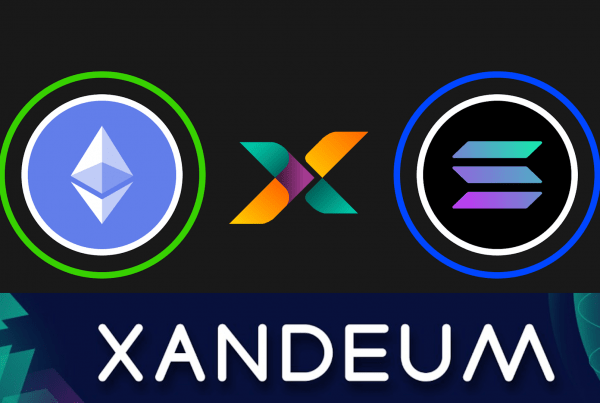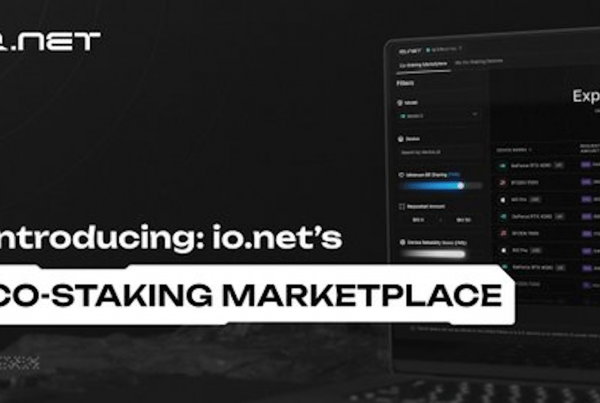
More than just another web3 layer, Orderly Network is a rising star in cross-chain liquidity provision. It may not be the first name on the lips of DeFi traders, but it’s one with which omnichain developers are very familiar. That’s because they’re its target audience. Orderly is in the B2B business, supplying the infra for others to whitelabel and deploy under their own branding. But with recent moves into B2C territory too, Orderly Network’s profile is beginning to rise.
Ultimately, Orderly aims to become the preeminent omnichain liquidity layer for seamless and efficient trading across diverse blockchains. While Orderly offers consumer-facing products, it’s primarily intent on supplying the tools for other web3 projects to build with, furnishing them with the liquidity to create superior spot and perps trading solutions.
Built for builders
At its core, Orderly Network is a backend service tailored for developers and protocols, not end-users. By offering a plug-and-play infrastructure for decentralized exchanges (DEXs) and other trading applications, it alleviates one of DeFi’s most persistent challenges: access to deep liquidity. Builders leveraging Orderly gain the ability to launch advanced spot and perpetual futures platforms without the hassle of bootstrapping liquidity or crafting their own trading infrastructure from scratch.
This modularity is where Orderly truly excels. Its services are available to a broad range of stakeholders, from DEX developers to wallets, custodians, and gaming applications. Whether a project is focused on high-frequency trading, institutional-grade compliance, or user-friendly interfaces for retail traders, Orderly’s infrastructure provides the underpinnings for scalable growth.
That’s the big picture stuff. Now let’s drill into the details and determine what sets Orderly apart from the competition.
What Orderly does different
Orderly’s orderbook-based trading system offers CEX-level performance, with sub-200ms latency. This makes it attractive to high-frequency traders and institutions that demand reliability and speed, two traits often missing in traditional DeFi setups. By combining onchain security with CEX-like efficiency, Orderly has successfully positioned itself as a versatile solution for developers building advanced trading applications.
Perpetual futures trading is another area where Orderly excels. It’s one of the fastest-growing segments in DeFi, yet onchain perps require significant liquidity to support leveraged positions. Orderly addresses this challenge by providing shared orderbook liquidity, allowing protocols to tap into a pre-existing pool of capital. This eliminates the need for costly liquidity mining programs or reliance on transient liquidity providers.
Making Omnichain a working reality
Orderly is on a mission to unify cross-chain liquidity, regardless of the network, protocol, or blockchain VM in question. Its recent launch on Solana introduced an industry-first: combining EVM and non-EVM orders into a single perps orderbook. By enabling trades across chains without requiring cumbersome bridging processes, Orderly has done its bit to simplify the multichain trading experience, particularly for perps markets.
Orderly’s infrastructure now supports a wide array of applications centered around trading. Its primary clients include:
- DEX Aggregators: Leverage Orderly’s liquidity to secure competitive rates for users and increase trading volume.
- Web3 Wallets: Integrate white-label DEX solutions to enhance user experience and generate additional revenue from trading fees.
- Perps DEX Developers: Access deep liquidity without engaging in liquidity mining, enabling sustainable growth and lower operational costs.
- Gaming Dapps: Integrate token swaps or trading functionalities directly into gaming applications to keep users engaged within the platform.
Early signs of success
Orderly’s achievements over the past year demonstrate its capability to deliver on its promises. Over $90 billion in cumulative trading volume has now been racked up across protocols using Orderly’s liquidity layer, with more than 400,000 users interacting with its tech stack, primarily through white label solutions.
The last year has seen deployment across six major chains including Ethereum, Polygon, Arbitrum, and Solana and the successful launch of the $ORDER token. The $ORDER token serves as a native utility and governance token and has been designed to decentralize the protocol, drive network growth, incentivize user participation, and maintain economic stability.
Another area where Orderly Network saw significant success in 2024 was in terms of integrations. Orderly has been sealing partnerships at a rate of knots, having integrated with more than 30 partners to date including LayerZero, where it processes 28% of all messaging volume, QuickSwap, Arbitrum, and Optimism.
The future of onchain is Omnichain
At this stage in the life cycle of decentralized finance, a few things are abundantly clear. Firstly, onchain volumes and use cases are only set to grow. Secondly, the number of L1 and L2 networks mandates better interoperability solutions to solve for fragmentation, particularly when it comes to liquidity. Given these trends, it’s safe to assert that demand for omnichain solutions such as those provided by Orderly is only going to rise.
Orderly’s ultimate goal is to become an omnichain protocol that seamlessly aggregates liquidity across all major blockchains. As DeFi continues to grow and diversify, its role as a unifying layer will become increasingly important. With its focus on liquidity, CEX-level performance, and plug-and-play simplicity, over the last 12 months Orderly Network has quietly become a cornerstone of decentralized finance infrastructure.
Given its focus on B2B services first and foremost, Orderly still maintains a low profile among retail users. But as it expands its own branded trading solutions, such as its Solana perps order book, that’s starting to change. If you’re bullish on DeFi and believe its future will be omnichain and fully interoperable, you’d do well to keep tabs on Orderly and its eponymous token.



